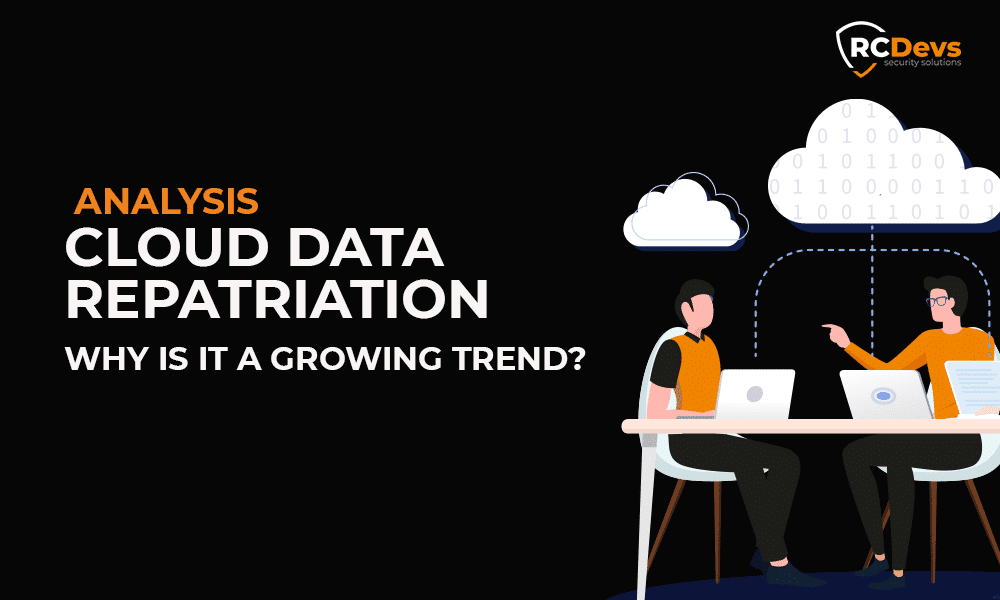
Cloud data repatriation is a growing trend
Cloud data repatriation is a growing trend
A decade ago Cloud Computing changed the IT industry landscape, with promising words such as cost efficiency, increased flexibility, and greater collaboration, to name just a few. Many organizations jumped in with both feet, migrating their operations entirely into the cloud or starting up new companies based around cloud services. But promises fade away and experience brought new challenges that pushed companies to return at least some of their core data and applications to their on-premises data centres. The trend is called “cloud data repatriation,” and it appears to be gaining steam. So, we went from a paradigm that the public cloud is the best place for everything, to a strategy to place applications where they fit best – even including pulling some back from the public cloud. But before looking at what is causing the trend of cloud repatriation? First, let’s take a closer look at the numbers
The numbers behind the trend?
Repatriation is one of the key results of the 2020 edition of Nutanix’s Enterprise Cloud Index. Applications deployed in the public cloud tend to be repatriated to on-premise infrastructure. Thus, 73% of the 2,650 IT decision-makers surveyed in 24 countries report migrating applications from the public cloud to a private cloud, or traditional data centres. Businesses realize that a fully public cloud-based strategy is not always optimal.
IDC reports, that 80 per cent of organizations repatriated workloads last year and that, on average, companies expect to return 50 per cent of their public cloud applications to hosted private or on-premises locations over the next two years.
Finally, according to research released by IHS Markit and cloud security provider Fortinet, 74% of companies move apps onto the cloud and then moved them back on-premise.
These results outlined a growing trend where businesses are moving applications from the cloud. But what are the reasons behind the trend?
Why companies are moving back their core data and applications to their on-premises data centers?
Security
Among the main factors listed by companies to move back their data from the public Cloud, Security is cited as the leading reason. Companies came back from the misconception that data in the public cloud was 100% protected and secure. In fact, with several high-profile data leaks involving cloud providers (an August 2018 AWS error, for example, exposed business-critical information involving over 31,000 systems for the company GoDaddy), their concerns are not without merit. But the weakness of public cloud is that the very nature of public cloud infrastructure allows data to be accessed from anywhere, and data often has to travel exposed to the open internet, making it vulnerable to theft or infection by malware. Besides, sharing the same environment in a public cloud increase the likelihood of the wrong people being granted access to the wrong data which are supposed to be secure data. The Private Cloud on the other hand allows companies to implement the security protocols they want to secure their data.
Control
If security is the most important reason for the repatriation trend, control is not far behind. For today’s companies, few assets are more valuable than their data. From customer information to the unstructured mass of data collected from the edge of networks by a variety of devices, organizations need to analyse these data in order to extract valuable insights that can give them an advantage in increasingly competitive markets. But analysis comes with control, and in order to use the power of their data companies need to have control over where it’s located, how it’s managed, and where it goes. Most of the time, the public cloud doesn’t offer this level of control exclusively to companies because providers have the ability to interact and sometimes to restrict the use of their client data. Giving away a part of the control over their data could be very critical for companies, especially if the management decides to relocate its assets and expects to get back all of the data. In the end, bringing data and workloads back in-house can provide better visibility of what exactly is happening and control security and compliance. GDPR for instance has given organisations a reason to keep their data close as a measure of data sovereignty.
Cost
Cost-effectiveness is the master word when it comes to companies’ decisions, and moving data to the public cloud was not an exception. The Public Cloud promised better cost-effectiveness for businesses that were dealing with a huge amount of data for backup and archiving. For companies that are just starting out and can’t afford the up-front expenses of servers, storage, and other physical IT infrastructure, public cloud computing offers a simple and quick solution that won’t break their budget. But as more and more cloud-ready technologies are available in the data centre, the gulf between the two has narrowed, which in turn reduces the cost benefits of the public cloud. For many companies, on-premise solutions are already more cost-effective than the public cloud for the majority of workloads.
Here we have to mention again the question of data gravity because it will prohibit moving large sets of data due to the growing cost of network transmission.
Availability
When it comes to data and the ability for companies to access their data, we need to understand a little bit about “data gravity” and how it has a huge impact on companies’ choice to repatriate applications and data from the Public Cloud. Data gravity is the idea that Applications and data are attracted to each other. And the more data there is, the greater the attractive force pulling applications and services to associate with that data, which means data availability is crucial to the success of any organization. While public cloud providers regularly present the benefits of being able to access data from anywhere at any time, that access doesn’t amount to much if the provider is experiencing system downtime. And By shifting to a private cloud environment, companies can secure much higher levels of uptime service. By doing so, businesses make sure their data and assets will be available when they need them most.
Alternative to cloud storage
The repatriation trend is showing that today’s companies have many different types of cloud computing to choose from. The ability to stay flexible is the key to keeping the best of both worlds. In many cases, the ideal solution is a hybrid cloud deployment, which combines the security and control of a private cloud with the scalability and resources of a public cloud. Multi-cloud architecture also provides a great deal of flexibility to meet a variety of computing needs. The hybrid cloud gives organizations the choice to place their applications and data where they fit best, including in their own data centres, and this will probably become the norm that we are going to see in the future.

